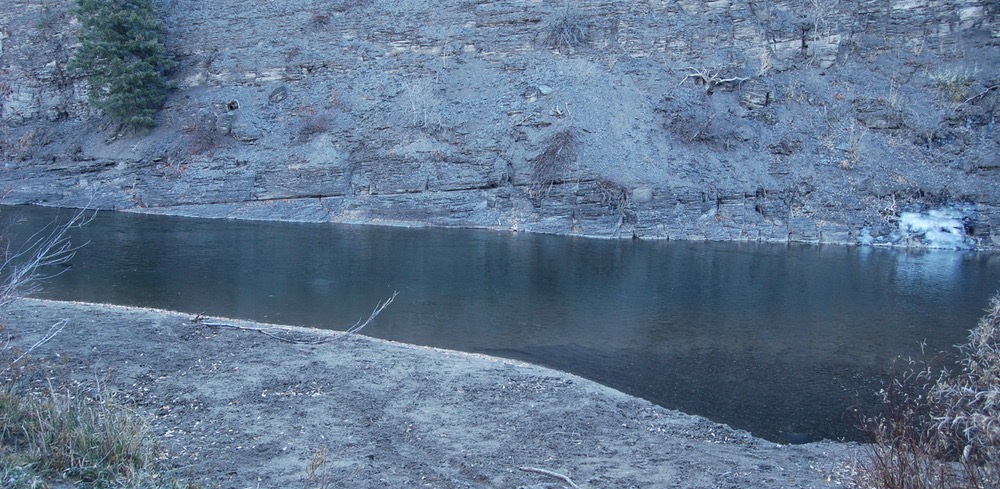At their regular meeting last week, the Pagosa Springs Town Council held a lengthy discussion about improvements to the area around Cotton Hole. A variety of opinions were offered. Numerous concerns were brought up.
Some of our readers may not be familiar with the river feature known as Cotton Hole — a wide spot in the San Juan River that I’ve been referring to, for the past 25 years, as Cotton’s Hole (with an apostrophe ‘s’.) Just goes to show, you can’t always trust a news reporter.
But I can’t stop calling it Cotton’s Hole. It’s a habit now. It just feels… comfortable.
My family learned about Cotton’s Hole a few days after moving to Pagosa Springs in the summer of 1993. We’d rented a small riverfront cabin on San Juan Street, and as it turned out, our cabin (which has since been torn down to make room for some high-end condos) was not much more than a stone’s throw from a bend in the river where a steep, shale slope dropped down from Reservoir Hill and caused the river to create a swimming hole of sorts — with a tiny, somewhat sandy beach, thickly surrounded by willows. The river flowed in from the north after passing under the First Street Bridge, and then slowed and deepened as it spread out slightly beside the shale hillside.

When we first visited the swimming hole, in late June, the water was still chilly and not much more that chest high on an adult at the deepest spot. But it was a fine swimming-and-splashing depth for our three kids, and the neighborhood kids we met up with along Hermosa Street, on the way to the river.
Hermosa Street was still a dirt road.
Of course, families with money could afford to swim in the concrete, geothermal swimming pool at the Spa Motel, also a stone’s throw away from our cabin, in the opposite direction. But we didn’t yet have jobs, or a permanent home, so a free swimming hole worked just fine for the summer of 1993. We were given to understand that the wild, undeveloped property wasn’t actually public property, but that the owners — whoever they were — generally ignored the public use of the swimming hole.
Back in those days, Pagosa Springs as a whole had something of a wild, undeveloped feel. Even the existing homes and businesses looked slightly unkempt, rough, slightly primitive. The streets were still gravel; the town sported a single stoplight at the Fourth Street intersection. If you didn’t have a job with the government or one of the local building contractors, you’d be lucky to earn $8 an hour, if you could even find a job. Downtown homes — often fixer-uppers — could be had for less than $100,000. Sometimes much less.
Cotton’s Hole — a rustic swimming hole with a little sandy beach, on someone’s private property — seemed to fit into the picture perfectly. The surrounding vacant property — mostly unbuildable because of its location in the FEMA-established floodway or floodplain — was scattered with fallen cottonwood branches and untamed wild grasses and scrubs.
It’s still rather untamed.
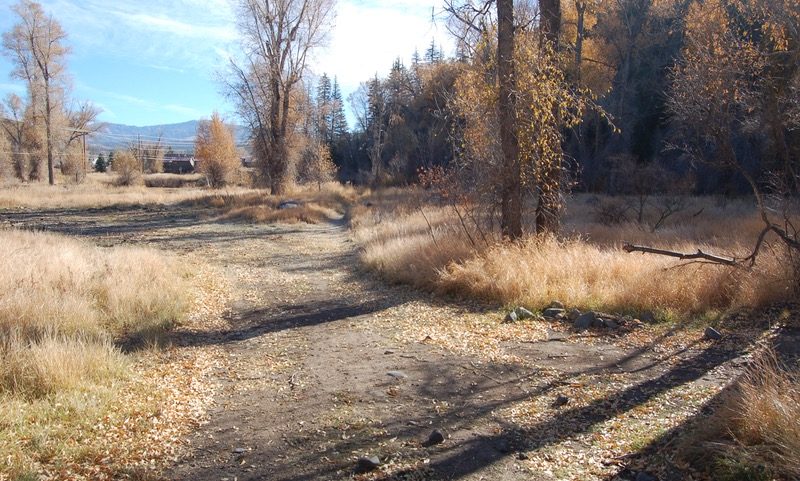
A old barn structure stood nearby, and I was told that, once upon a time, the Cotton family harvested blocks of ice from the river during the middle of winter and stored them in the barn, which reportedly had thick walls filled with sawdust. Pagosa residents bought the ice for their ice boxes, all summer long. Or so I was told.
The old barn is still there.
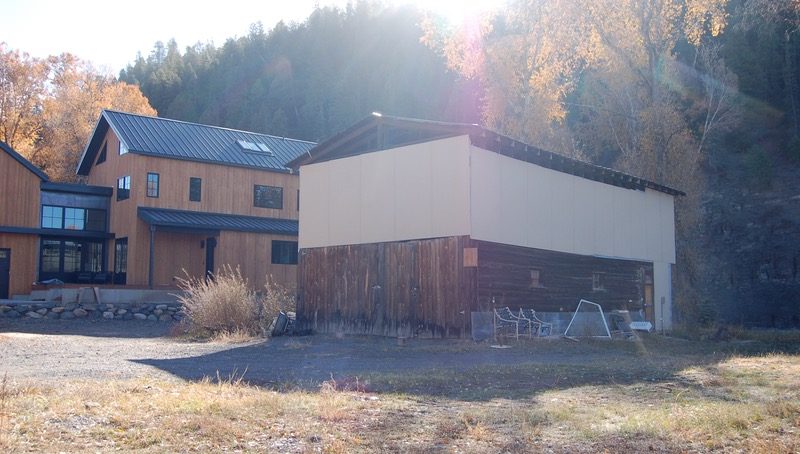
And the same old houses still line Hermosa Street, for the most part, except in a couple of spots where more modern homes have sprouted up. One of the new homes is situated very close to Cotton’s Hole, and is owned by the Macomber family. It appears that the foundation for the house was built up to get the structure out of the FEMA floodplain.
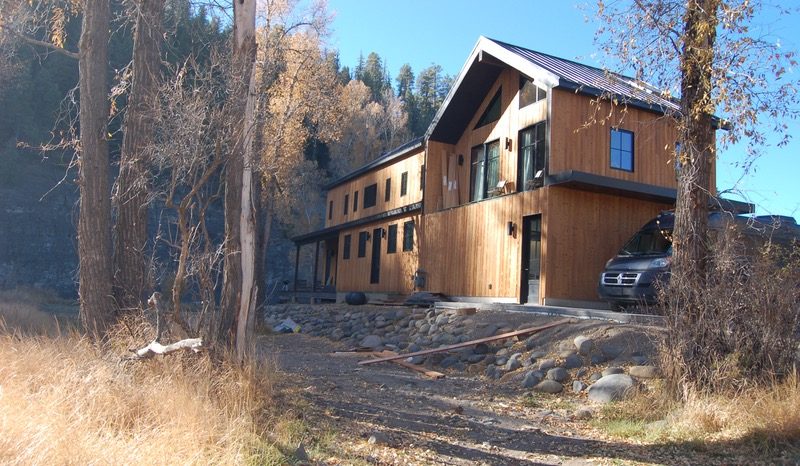
The architectural style of this new home differs quite a bit from the early 1900s style found in many of the nearby homes. The size also differs.
Here’s the home on the opposite side of the street, for example, featuring the mismatched windows so common in older downtown homes. Rustic charm, they call it.
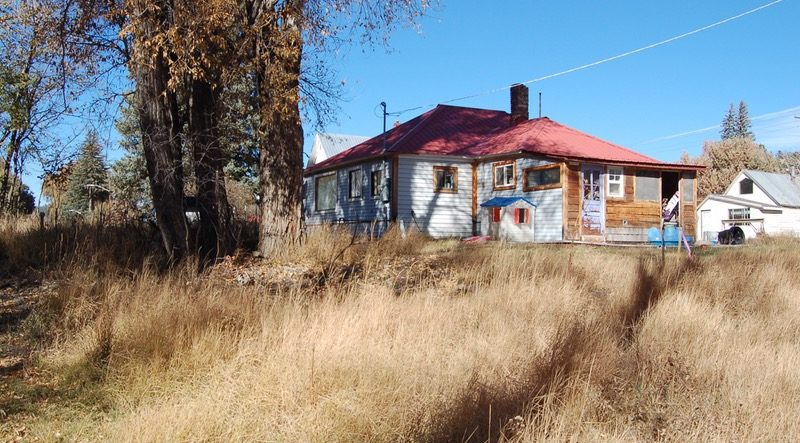
A couple of years ago, the Town government learned that the property around Cotton’s Hole might be going on the market, and the traditional access to the old swimming hole might be threatened. The threat was discussed by the Town Council, and on October 31, 2017, the Council voted to pull $400,000 out of their reserve funds to purchase four parcels along the river, as part of a plan to preserve river access. The property has since been dubbed, ‘Cottonhole Park.’
For the past decade, the Town had been adding ‘whitewater’ features to the downtown stretch of the San Juan, and the newest (and perhaps the final) water feature was added in 2018, just a few yards upstream from Cotton’s Hole. The feature includes large imported boulders and a concrete slope, and has already become a favorite with tubers and rafters along the downtown stretch of river.
Reporter Norm Vance published a photo of the new whitewater feature last summer on the online Pagosa Journal:
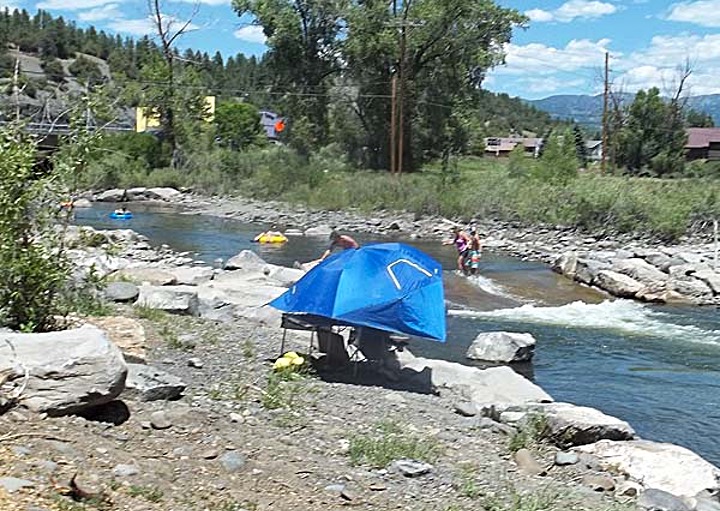
During my walk through the “Park” yesterday, I snapped my own shot of the whitewater feature as it looks in late October. No one in their right mind would be tubing or rafting the San Juan River in October, nor at any time during the fall or winter — when the water is too low — or in the spring — when the water is too high. The water features are most popular from about mid-June until maybe the end of August during a typical year.
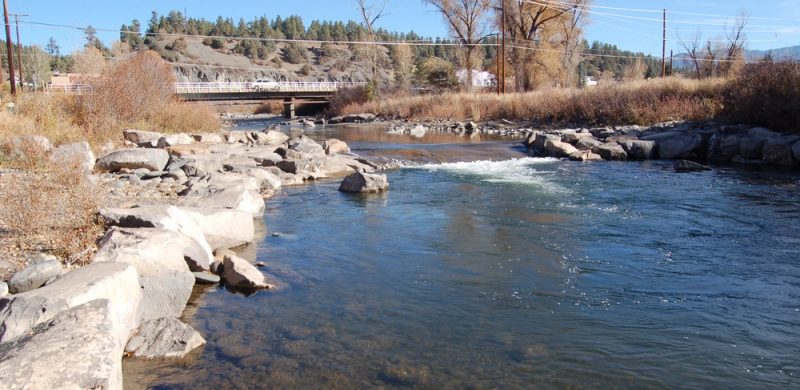
But it’s not only Cotton’s Hole that has attracted the Town Council’s attention to the east end of the Hermosa Street neighborhood. When my family arrived back in 1993, the Town had completed one modest stretch of the San Juan River Walk, a recreational trail intended to extend from the southernmost town limits — where Yamaguchi Park was later constructed on South 5th Street — to the easternmost town limits, behind the River Center and nearby businesses. Back then, the River Walk started at Town Park and headed west about 1,800 feet past Centennial Park to stop at South 6th Street. It was pleasant enough, but the Town had bigger plans.
The finished River Walk Trail — if we live to see it completed — is intended to be about two miles long from end to end.
And rather expensive?
Read Part Two, tomorrow…

